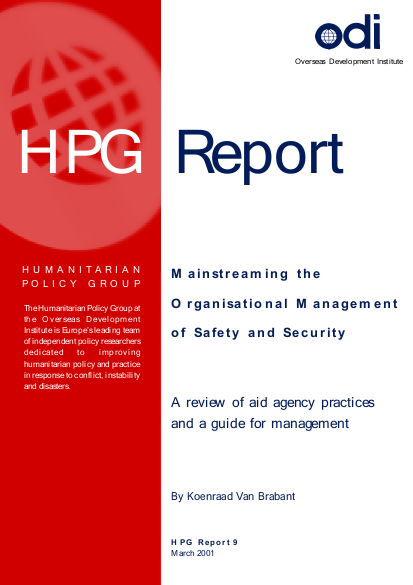
This report offers a comparative overview of recent aid agency attempts to strengthen the management of safety and security. It is based on consultation with 20 organisations, including NGOs, the Red Cross Movement and UN agencies. It begins by clarifying the conceptual and practical similarities and differences between safety and security and then notes what triggers efforts to effect organisational improvements, as well as where resistance within an organisation may lie and why. It considers what different management approaches are in place, where agencies locate the safety and security expertise in headquarters and the sometimes difficult questions of clarity about authority, responsibility and lines of communication. It then reviews important management tools, such as fora in headquarters to discuss organisational safety and security management, a safety and security review, the development of a common security concept and a common understanding about possible security strategies, a safety and security policy, and questions of funding safety and security measures. It goes on with a detailed overview of various efforts to implement improvements, in operations in general and with regard to very specific threats, in personnel management in general, and with regard to staff competence development. There follows a look at relationships between aid agencies, and between aid agencies and other actors, such as the military, private security companies, embassies and the national authorities, particularly in the context of security management.The penultimate section offers an overview of the most important factors to inhibit or facilitate organisational improvements, together with more general organisational characteristics that may influence the ease with which these can be effected. It concludes with the suggestion that organisational improvements can usefully be directed and driven by a management plan. Such a management plan will be different for each organisation and vary according to the stage of development. The report offers not only a management review, but also provides tools and arguments for managers to review rapidly where their organisation is, to orient improvements and to identify objectives.
